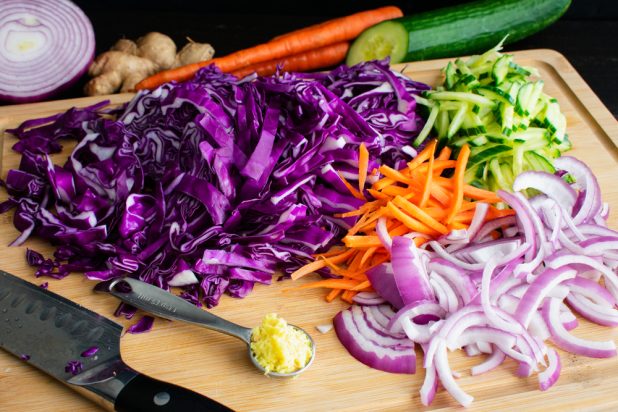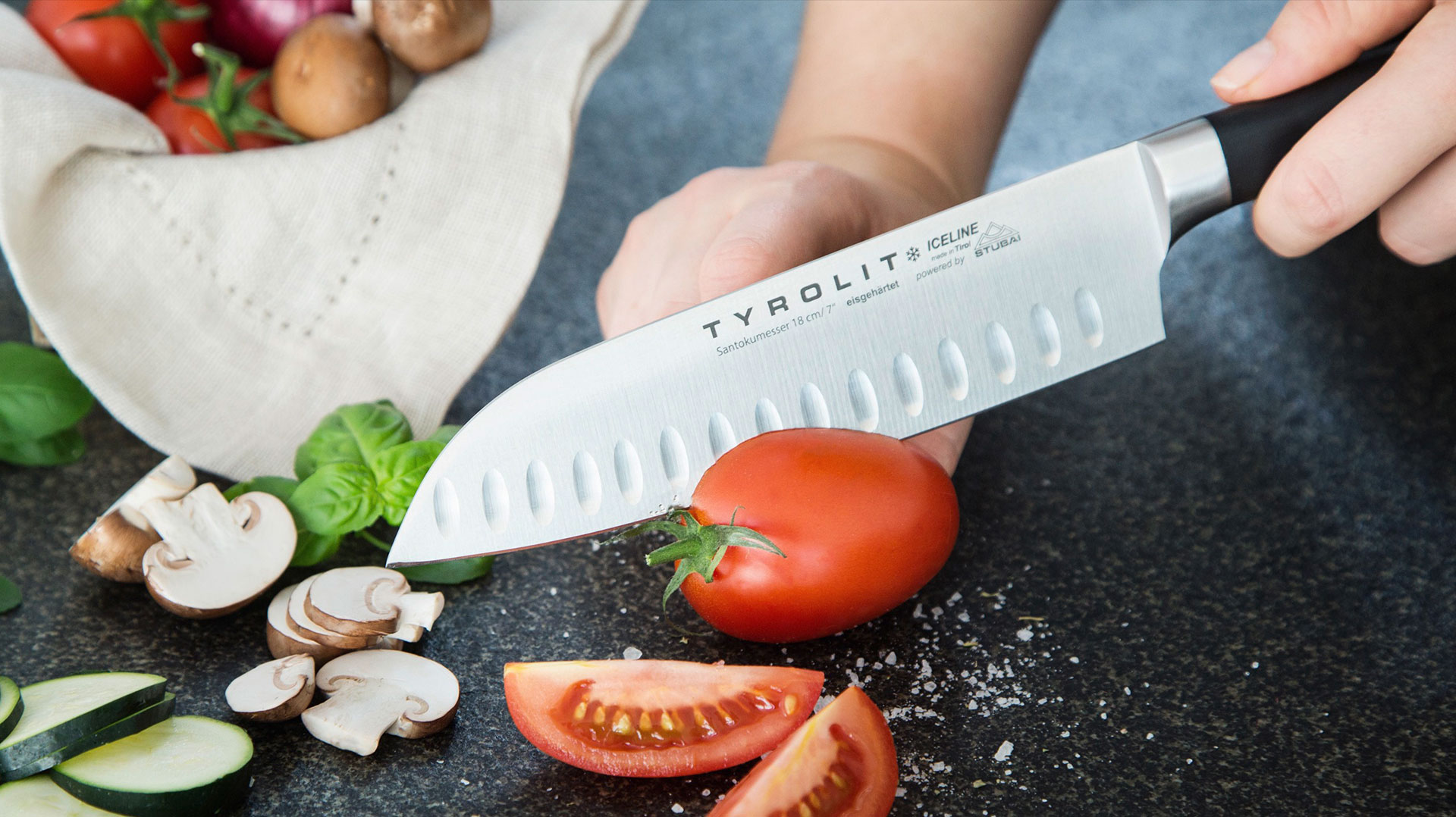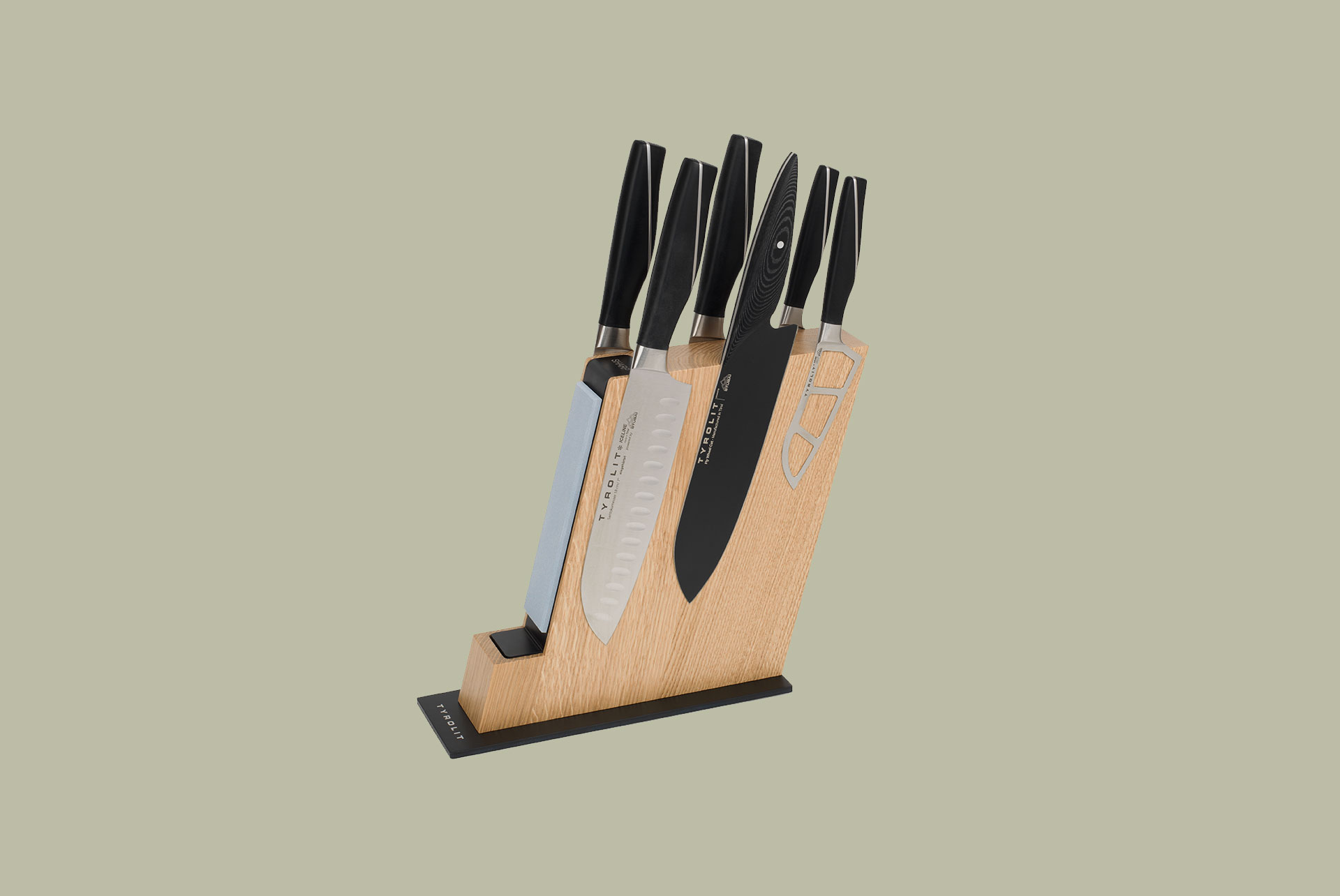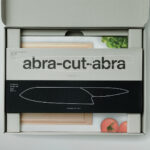Santoku knife – what is this type of knife suitable for?

The Santoku knife is excellent for cutting meat, fish, and vegetables, making it highly popular as an all-purpose kitchen knife. The Santoku stands as a favored alternative to the traditional chef’s knife, facilitating a wide array of cutting techniques — from slicing and dicing to chopping.
Characteristic of the Santoku knife is its wide blade, which allows for particularly efficient lifting and transferring of chopped foodstuffs into a pot, for example. Various materials are utilized in its manufacture, enabling this type to be available both as a Damascus and stainless steel knife.
Originally from Japan, the santoku knife is available both as a Japanese kitchen knife and in European variants. Although they are very similar in blade shape, European santoku knives are typically sharpened at a larger angle (about 15 degrees). This makes them slightly less sharp than their Japanese counterparts, but gives them stability and longevity.
The advantages of a high-quality Santoku knife – from its versatility to its ergonomic design – render it an essential tool in any kitchen, whether for hobby cooks or professionals. Therefore, in this post, we’ll explore the tasks where a premium Santoku knife can excel.
Cutting with the Santoku Knife
The Santoku knife is especially practical for cutting due to its wide, sharp blade. When comparing it to classic chef’s knives, the shorter blade of the Santoku knife stands out. This feature makes it exceptionally agile, enabling precise cuts in meat, fish, and vegetables.
The sharp blade glides effortlessly through the cutting material, facilitating precise cuts and preserving the texture of the foods. The broad shape of the blade further ensures that the cut material can be comfortably managed and moved, while the hollow-ground edge (indentations on the side of the blade) prevents sticking to the blade.
Whether fine Julienne strips or thin carpaccio – the Santoku knife masters every task with ease. This versatility also makes it an excellent meat knife, ideal for precise cuts when cutting meat.
Cut correctly with a Santoku knife – that’s how it’s done!
The Santoku knife – an all-purpose knife rooted in Japanese tradition – has long since carved out its place in modern kitchens. Its distinctive shape not only makes it visually striking but also excels in slicing a variety of ingredients. But how does one properly use a Santoku knife to cut? All the details in the article!
Dicing with the Precision of a Santoku
Dicing ingredients is particularly effective with a santoku knife, thanks to its sharp blade, compact blade length, and – on many models – the dimples along the side of the blade.
Both Japanese Santoku knives and their European counterparts glide effortlessly through the ingredients. The wide blade of these sharp knives ensures a clear view when cutting uniform cubes. Whether it’s onions, carrots, or bell peppers, a Santoku knife enables both amateur and professional chefs to create fine and even cubes – not only for Japanese cuisine but across a wide range of dishes.
Particularly popular when dicing with the Japanese chef’s knife is the so-called pinch grip for properly holding the Santoku knife. This grip technique, where the thumb and forefinger enclose the blade directly in front of the handle, allows for excellent control and precision when cutting vegetables à la brunoise or for finely chopping meat and fish into delicious tartare.
Hacking? Yes, but …
In principle, it must be said: A santoku knife is not a cleaver, but rather is more suitable for other cutting techniques (such as the rocking cut). Especially the Japanese santoku knives can be sensitive to being struck with force against the cutting board.
Does that mean you can’t hack with the santoku knife? Not necessarily, but you should not work with brute force. Softer vegetables and herbs can be chopped with santoku knives. And the grip of the European Santoku knife can also help, since this all-purpose knife offers a higher degree of stability.
Storing Santoku Knives – Correct and Safe Storage
Proper storage not only protects the blade from damage and wear, but also contributes to the safety in the kitchen. In this article, we will therefore present various methods of Santoku knife storage and explain how you can optimally protect and care for your knife.
European Santoku Knives from Tyrolit Life
Cut, dice, chop – the Santoku is a true utility knife! That is why many knife sets contain these Japanese all-purpose knives in addition to other types of knives.
Tyrolit Life also carries Santoku knives in two different lengths – either with a blade length of 18 cm, or 12 cm with the small Santoku knife. Like all knives in the Iceline knife series from Tyrolit Life, they are also made of stainless steel and ice-hardened (56 HRC). This not only gives the Tyrolit Life Santoku knife its extreme sharpness, but also its longevity.
Nevertheless, over time, even a high-quality Santoku knife will become dull. To address this, Tyrolit Life has developed particularly user-friendly knife sharpeners. Thanks to the pre-set sharpening angle of 15 degrees, they are ideally suited for sharpening most types of European knives. This way, you can quickly and easily give your Tyrolit Life Santoku knife a new edge.
In addition, Tyrolit Life has equipped its knife blocks and cutting boards with integrated grinding stones – each with a 400 grit for coarse grinding and an 800 grit for fine grinding. Again, the preset 15-degree sharpening angle makes it easy to use, so you can casually sharpen your santoku knife.
FAQs
What do you cut with a Santoku knife?
What do you use a Santoku knife for?
What does u0022Santokuu0022 mean in German?




